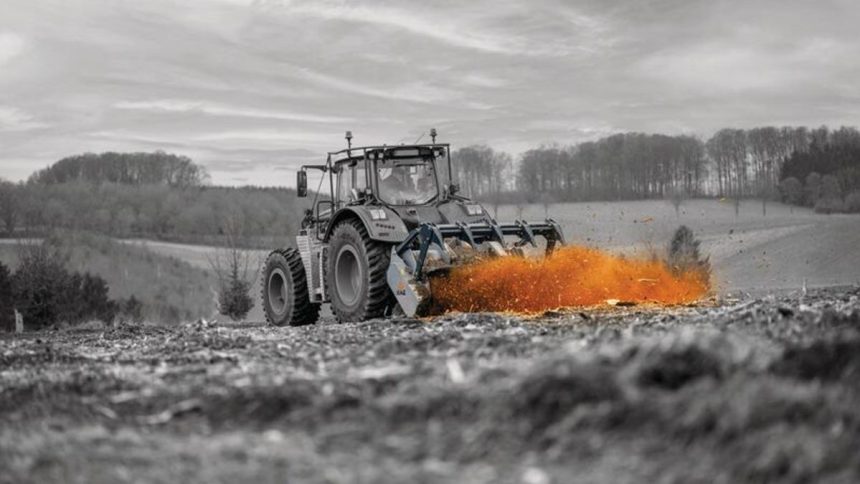Clearing forested areas requires more than just power – it demands precision, adaptability, and the right equipment for challenging environments. Uneven topography, dense undergrowth, and mixed vegetation types can place intense strain on machines.
Selecting the right forestry mulcher is critical to achieving operational efficiency, especially when working in harsh terrain where productivity and durability are pushed to the limit.
Understanding the terrain: what makes a site demanding
Demanding terrain is typically defined by steep slopes, unstable ground, high rock content, and irregular vegetation density. In such conditions, machines face both mechanical and logistical challenges.
Navigating inclines, managing traction, and avoiding damage from hidden obstacles like stumps and boulders are daily concerns. Additionally, the presence of thick brush, intertwined root systems, and hardwood trunks increases cutting resistance and wear on components.
Soil structure also plays a role. Loose or wet substrates can limit traction and lead to slippage or sinking, while dry, compacted soil may increase vibration and stress on the frame. Understanding these variables is essential before selecting a mulcher and pairing it with an appropriate carrier.
Powertrain and compatibility: matching mulchers to carriers
A forestry mulcher’s effectiveness is directly influenced by the compatibility with its carrier. Key parameters include hydraulic flow, pressure, weight, and available horsepower. Carriers such as tractors, excavators, and tracked vehicles have differing capabilities, and matching these with a properly rated mulcher ensures consistent performance.
Mechanically driven mulchers for PTO tractors are ideal in open, level areas, offering a direct power transfer. Hydraulically driven heads, common for excavators and skid steers, provide better maneuverability and are suitable for tighter, more obstructed spaces. For steep or unstable terrain, tracked carriers with low ground pressure are preferred to maintain balance and traction.
Width of cut also matters – wider units clear more area but require higher horsepower and increase the risk of imbalance on slopes. Narrower heads may be slower but offer greater control in precision operations.
Rotor and tooth configuration: optimizing cutting capacity
Rotor design significantly impacts cutting performance and efficiency. Fixed-tooth rotors provide aggressive cutting action, suitable for hard or compact vegetation, while flail-type rotors are more flexible and ideal for softer brush. For particularly tough conditions, rotors with Bite Limiter technology help manage power absorption and prevent overloading.
Tooth selection is just as important. Carbide-tipped teeth are best for rocky or abrasive environments, while steel blades work well in cleaner, softer applications. The spacing, number, and angle of teeth affect mulch size, rotor load, and wear rate.
Mulchers operating in heavy-duty conditions must be equipped with reinforced rotors, properly selected tool holders, and optimized tool distribution to avoid imbalances and ensure smooth operation.
Durability, protection and maintenance considerations
Durability isn’t just a benefit – it’s a necessity in demanding terrain. Reinforced chassis, high-strength steel skids, and heavy-duty side panels protect vital components from impacts and abrasion. Protective chains and deflectors further shield the rotor and the carrier from flying debris.
Maintenance access is another critical factor. Easy access to lubrication points, quick-change tooth systems, and simplified belt tensioning mechanisms reduce downtime and improve serviceability. Machines equipped with wear-resistant bushings and self-cleaning rotors offer better longevity in environments where productivity must be sustained without frequent intervention.
Investing in productivity through precision selection
Choosing the right forestry mulcher for demanding conditions is a strategic decision. It requires careful analysis of the job site, compatibility with carrier specs, and expected workload.
When correctly matched, a mulcher becomes an asset that not only handles difficult terrain but also maximizes output and minimizes maintenance. Precision in selection ultimately translates to operational efficiency, cost savings, and long-term reliability in the field.
Forestry mulchers by FAE: built for long-lasting performance in the field
With roots dating back to 1989, FAE has become a global leader in the development and manufacturing of professional-grade attachments for tractors, excavators, skid steers, tracked carriers, and purpose-built vehicles.
The company serves a broad spectrum of sectors, including forestry, agriculture, infrastructure maintenance, and demining, offering robust and high-efficiency equipment tailored to the complexities of vegetation control and land management.
Its product portfolio features over 400 models across more than 90 distinct lines, engineered to cover a wide variety of applications – from soil preparation to forest clearing and precision mulching operations.
FAE’s forestry mulchers are known for their heavy-duty construction, premium materials, and integration of cutting-edge engineering solutions. These machines are designed to perform in high-stress environments, maintaining output quality and structural integrity during continuous use.
Capable of processing vegetation up to 20 inches in diameter – including trunks, stumps, roots, shrubs, and branches – FAE mulchers ensure consistent and fine shredding results on virtually any type of terrain. Their flexible configurations allow them to be mounted on various carriers, making them ideal for complex operating contexts such as sloped terrain, burnt landscapes, dense woodland, and infrastructure corridors.
Driven by a long-standing commitment to innovation and field-proven reliability, FAE continues to support professionals with forestry mulching solutions that offer durability, adaptability, and dependable performance where it matters most.
Lynn Martelli is an editor at Readability. She received her MFA in Creative Writing from Antioch University and has worked as an editor for over 10 years. Lynn has edited a wide variety of books, including fiction, non-fiction, memoirs, and more. In her free time, Lynn enjoys reading, writing, and spending time with her family and friends.















